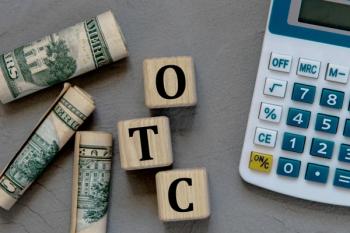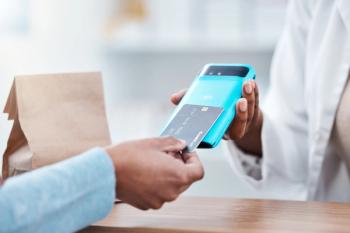
$0 Copay Program Effectively Improved Glycemic Control | ADA 2025
Researchers explored the impact of a $0 copay program on hemoglobin A1c levels in patients with type 2 diabetes who were also insured by Blue Cross and Blue Shield of Louisiana.
Blue Cross and Blue Shield of Louisiana’s $0 copay (ZDC) benefit effectively improved glycemic control among beneficiaries with type 2 diabetes (T2D), according to an abstract presented at the American Diabetes Association’s 85th Scientific Sessions, held in Chicago, Illinois, from June 20-23, 2025.1
“Diabetes-related costs continue to increase as a result of increasing in the overall disease prevalence and the high cost of managing the disease,” wrote authors of a study published in American Health & Drug Benefits.2 “In an era of tightening health care resources, it is imperative for disease-related costs to be estimated accurately to ensure that limited financial resources are optimally located.”
READ MORE:
While at least 38 million US patients have reported a diabetes diagnosis, anywhere from 90% to 95% of these cases are patients with T2D.3 Amid a US population significantly impacted by diabetes, and a health care system reliant on disease-related costs, reports show that the economic costs of diabetes care in the US has risen at least 7% from 2017 to 2022.4
With costs and prevalence of T2D on the rise, researchers of the current study evaluated a new program developed by Blue Cross and Blue Shield of Louisiana (Louisiana Blue).
“Louisiana Blue offered a ZDC pharmacy benefit to its fully insured members on July 1, 2020,” wrote the authors.1 “This study aimed to evaluate the effect of the ZDC program on hemoglobin A1c (HbA1c) levels among beneficiaries with T2D.”
To understand the ZDC program’s impact on glycemic control, researchers explored Louisiana Blue claims data from July 1, 2020, to December 31, 2021. Through data extraction, they identified 7603 continuously enrolled members with T2D.
Among the entirety of claims data explored, 2933 had HbA1c or blood glucose records during the baseline and follow-up periods. From this patient population, a total of 1410 beneficiaries were deemed eligible for the ZDC program. Patients’ blood glucose levels were eventually converted to A1c for study purposes.
“A difference-in-difference model with inverse propensity treatment weight was used to estimate the effect of the ZDC program on A1c, controlling for individual and time fixed effects, age, chronic conditions, and diabetes complications severity index,” they continued.1 “Diabetes controls were assessed as binary measures using HbA1c cutoffs of 7%, 8%, and 9%.”
When compared with beneficiaries not participating in the ZDC program, patients saw a 0.12% greater reduction in A1c levels.
The true understanding of why $0 copay translated to better glycemic control has not yet been determined. However, with patients not required to pay out-of-pocket for T2D management, they may be encouraged to keep a better focus on their health and improve glycemic control. When financial burdens are less of a barrier to valued care, providers and patients have the ability to work together and significantly advance health care outcomes.
“Among the Louisiana Blue members with T2D, the ZDC program was effective in improving glycemic control, compared with those without the ZDC pharmacy benefits,” concluded the abstract.1
Ready to impress your pharmacy colleagues with the latest drug information, industry trends, and patient care tips? Sign up today for our
References
1. Tang T, Winberg D, Stoecker C, et al. $0 drug copay program improves glycemic control for patients with type 2 diabetes. Presented at: American Diabetes Association 85th Scientific Sessions; June 20-23, 2025; Chicago, IL.
2. Willey VJ, Kong S, Wu B, et al. Estimating the real-world cost of diabetes mellitus in the United States during an 8-year period using 2 cost methodologies. Am Health Drug Benefits. 2018;11(6). Accessed June 24, 2025. https://ahdbonline.com/issues/2018/september-2018-vol-11-no-6/2643-estimating-the-real-world-cost-of-diabetes-mellitus-in-the-united-states-during-an-8-year-period-using-2-cost-methodologies
3. Type 2 diabetes. CDC. May 15, 2024. Accessed June 24, 2025. https://www.cdc.gov/diabetes/about/about-type-2-diabetes.html
4. New American Diabetes Association report finds annual costs of diabetes to be $412.9 billion. News Release. American Diabetes Association. November 1, 2023. Accessed June 24, 2025. https://diabetes.org/newsroom/press-releases/new-american-diabetes-association-report-finds-annual-costs-diabetes-be
Newsletter
Pharmacy practice is always changing. Stay ahead of the curve with the Drug Topics newsletter and get the latest drug information, industry trends, and patient care tips.






































































































































